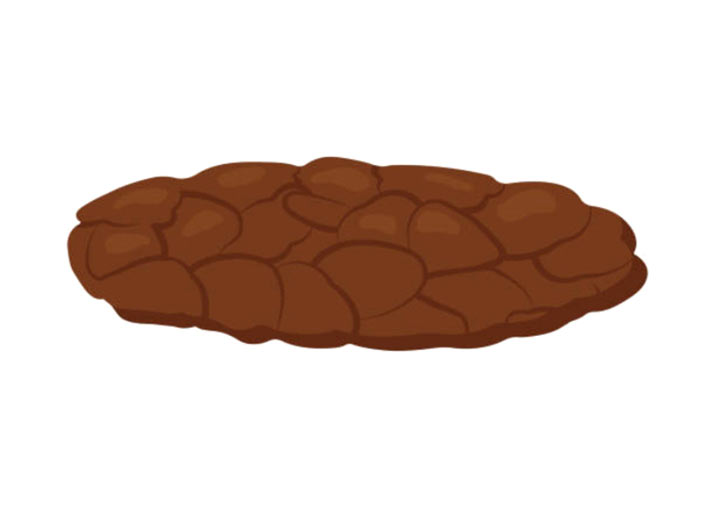When it comes to your health, your stool is one of the most powerful indicators. Its color, consistency and frequency can provide key insights into your digestive system – including how well you’re absorbing vitamins and minerals, potential infections or intolerances, evidence of parasites or other pathogens present in the body, as well as many other issues that may be occurring internally. Understanding what different types of stool say about our health can help us better identify and address potential medical concerns so we can better promote our overall wellness. Keep reading for an overview of the various types of stools that signify different levels of digestive health.
Understand The Difference Between Soft and Hard Stools

Soft stools:
When it comes to bowel movements, the consistency of your stools can provide important clues about your digestive health. Soft stools are generally considered normal and healthy. Soft stools are easy to pass, and usually indicate that your digestive system is functioning well.
Hard stools:
Hard stools can indicate a variety of issues, from dehydration to bowel obstructions. Hard stools, on the other hand, can be painful to pass and may cause discomfort and straining. If you are experiencing hard stools regularly, it may be time to take a closer look at your diet and lifestyle habits to identify and address any underlying issues.
Ultimately, understanding the difference between soft and hard stools can help you better manage your digestive health and prevent potential problems in the future.
What Changes in Color and Consistency Mean for Your Health?
As we go about our daily routines, few of us take a moment to take notice of the color and consistency of our urine or even stool.
- Changes in these can be a sign of certain medical issues and may require prompt attention.
- The color of urine can tell a lot about your body and indicate signs of dehydration, liver or kidney disease, or even bladder infections.
- Stool consistency can also provide clues about digestive issues or other ailments.
- Knowing what to look out for and seeking medical attention can help identify and treat health issues with effective outcomes, making those few moments of observation just as important as the rest of their daily routine.
Explore the Relationship between Stool Size and Health

The size, shape, and texture of our stools can reveal a lot about our overall health. While many factors can contribute to changes in stool size, including;
- Diet
- Exercise
- Medication
It's important to pay attention to what our stools are telling us. A healthy bowel movement should be soft and easy to pass, without any pain or discomfort.
Stools that are too hard, too loose, or irregular in size and shape can signal digestive problems such as constipation or diarrhea, as well as more serious issues like colorectal cancer. By monitoring our stools and making small lifestyle adjustments as needed, we can promote better digestive health and prevent potentially serious health complications down the line.
How to Monitor Your Stool Frequency for a Healthier Gut?
If you're looking for a way to maintain a healthy gut, monitoring your stool frequency is a great place to start.
- Paying attention to how often you're having bowel movements can help you identify any potential issues, such as constipation or diarrhea.
- It's recommended that you have at least one bowel movement per day, but this can vary from person to person.
- Some individuals may have more frequent bowel movements, while others may only go every other day.
- Keeping track of your frequency and consistency can help you identify any changes or abnormalities, which can be important for maintaining optimal digestive health.
How to Tell if You Have Healthy Stool or Not?
Understanding the state of your digestive system is essential in providing insights into your overall health.
- One way to do this is by examining your stool. Healthy stool generally has a texture that is firm, smooth and compact, similar to that of a sausage.
- It should be light to medium brown in color and neither too hard nor too soft.
- If your stool is harder or lumpy, it could indicate constipation, while thin and ribbon-like stool may indicate an obstruction in your digestive tract.
- Black, tarry, or bloody stool could indicate bleeding in the digestive system.
Paying attention to these subtle changes in your stool can provide some clarity into what’s happening inside your body, so you can seek the appropriate treatment if necessary.
Tips for Improving Stool Quality and Quantity
Proper bowel movement is a vital component of a healthy lifestyle, yet many individuals experience irregularities or discomfort associated with it. Factors such as diet, hydration, exercise, and stress can influence the quality and quantity of stool.
One way to improve your bowel movement is to increase your fluid intake and consume:
- Fiber-rich Foods
- Fruits
- Vegetables
- Whole Grains
To soften stool and promote healthy digestion. Additionally, regular exercise can stimulate bowel movements and reduce stress, which is a common culprit of digestive issues. It's also essential to listen to your body and not ignore any warning signs of abnormal bowel habits or pain. By incorporating these tips into your lifestyle, you can improve the quality and quantity of your stool and maintain your digestive health.
Conclusion:
Taking care of our gut health is an imperative for leading a healthy lifestyle. Knowledge is power, and understanding the signs and symptoms of any potential issues with stool consistency, color, and quantity better enables us to take measures to optimize it. If you’re unsure how to start improving your diet or lifestyle habits, reach out to your doctor or nutritionist for more information, and learn more about the intricate relationship between our bodies and our environment. With the right approach and mindset, we can all achieve optimal gut health for ourselves and live happier lives as a result.

Knee Brace May Help Torn Anterior Cruciate Ligaments Heal Themselves: An Overview
Oct 18, 2023

Shrinking Pores with Lasers: Fact or Fiction?
Oct 31, 2023

Winter Squash: 12 Compelling Reasons to Relish this Seasonal Delight
Nov 07, 2023

5 Effective Natural Remedies For Hiccups
Jun 22, 2023

Effective Shoulder Strengthening Exercises for Robust Musculature
Nov 09, 2023

What is a Sphincter
Jul 30, 2023

Discover the Top 12 Health Benefits of Incorporating Corn into Your Diet
Nov 08, 2023

Understanding Different Types of Stool and Their Health Implications
Oct 20, 2023

Exploring the Origins of Eczema
Nov 01, 2023

Narcolepsy: Genetic? Sleep Experts on Inheriting Chronic Disorder
Jan 16, 2023

Demystifying the Wonders of Lactic Acid in Skincare
Nov 03, 2023

Six Natural Approaches for Better Health
Nov 03, 2023